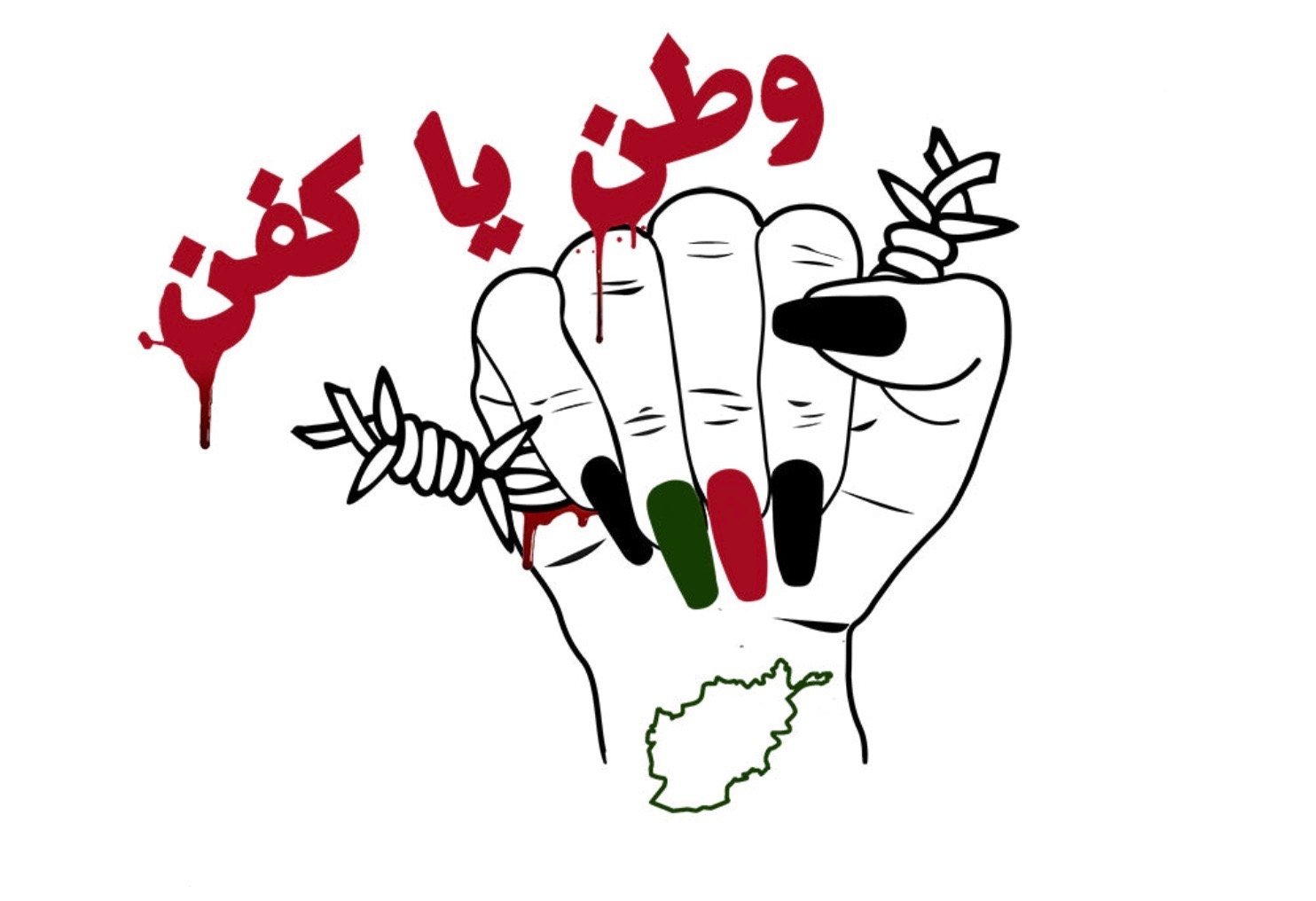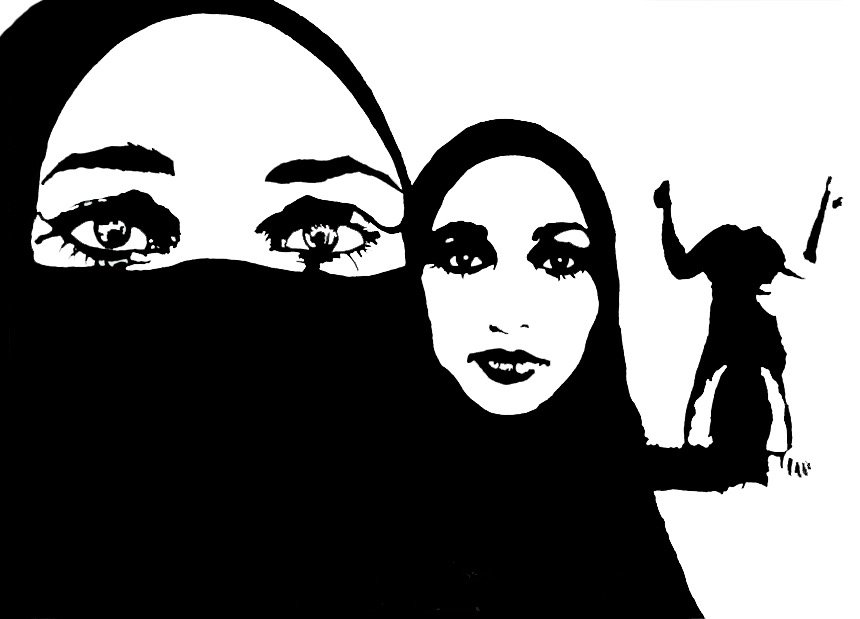Durkhanum Sewing Circle: Afghan Women Empowering Each Other Through Sewing
By Sofia Morris
In August of 2021, Shamayel Shalizi watched the Taliban take over Kabul, Afghanistan from San Francisco. Both of Shalizi’s parents are Afghan and she lived in Kabul during her teenage years. Currently, she designs jewlery for her self-made company Blingistan. Her passion for jewelry design and creative spirit stemmed from her years in Afghanistan.
“There's so much culture and talent and art in Afghanistan. It was so normal that after school one day I designed fifteen pinstripe suits for me and my brothers,” explained Shalizi. After making the designs, she and her brothers would go to the tailor and get measured. In Afghanistan, most people make their own clothes or go to private tailor to commission items. The ease at which a design is able to be produced inspired Shalizi to begin designing. “It really opened my mind to the possibilities of what I could do.”
At the onset of the conflict in August, Shalizi knew she had to do something. “I don’t think I slept longer than three hours a night for months. I didn’t eat properly. We were all just living and breathing Afghanistan,” said Shalizi.
Prior to August, Shalizi’s friend, who will remain nameless for safety reasons, in Kabul ran a cleaning service for wealthy families, but at the start of the conflict the women lost their employment overnight. With her friend, Mina Sharif, and the friend in Afghanistan, they dreamt up the initial idea of Durkhanum Sewing Circle. Durkhanum Sewing Circle aims to teach women skills to become tailors. Tailoring is an essential business in Afghanistan and women tailors will always be needed regardless of whether the Taliban allows women to work. During the six to eight week program, the women are provided with breakfast and lunch and at the end of the program they are able to take home their sewing machine and other essential materials to start working as tailors.
“This was all decided through a group chat on WhatsApp, like three Afghan women just being like ‘what do we want to do to help these people?’ It had no overhead. All we were doing was taking all of the money [we raised] and directly buying supplies, sewing machines, fabric, whatever, even electrical plugs with multiple outlets,” said Shalizi.
Their first round of fundraising was extremely successful as the entire world was focused on the conflict in Afghanistan. Durkhanum Sewing Circle reached their fundraising goal within several days.“The biggest donations we got were from non-Afghans who had lived in Afghanistan and had worked with Afghan women. They knew how strong they [Afghan women] were and knew how much of fighters they were,” said Shalizi. With the money, they purchased the materials needed and rented a house in Kabul that would be the home base for the project.
Shalizi’s t-shirt design for her company Blingistan.
“This design represents strength and resilience. No matter what, we will continue fighting for Afghanistan, until the death. “Watan ya kafan” was a saying popularized in the 1990s- our homeland or the grave, which I think fits the current mood: we fight for life.” All of the profits from the t-shirt sale are donated to Durkhanum Sewing Circle.
They were able to help 20-25 women through the program and it was a huge success. After the first round, women who had heard about the program through family members and friends asked if they could enroll in the next round.
The second round of fundraising was more difficult. Right now, Durkanum Sewing Circle is in its third round of fundraising and it is the slowest yet. Shalizi attributes this to people losing interest in Afghanistan and moving on to the next humanitarian crisis, although help is still needed in Afghanistan. Additionally, Shalizi argues that the West is fixated on certain images of Afghanistan that perpetuates a narrative that Afghan women are powerless and oppressed. In an aim to debunk this myth, they named their project Durkhanum which translates to “strong women.”
Many fundraising campaigns focus on short-term solutions in humanitarian crises and are run by outsiders. These campaigns provide aid such as food, which are essential, but do not offer long-term solutions. They spread images of children with their rib cages protruding rather than stories of empowerment. At Middlebury, activism and aid efforts are often short-lived, quickly moving from one crisis to the next. Posting an infographic on Instagram is important to spread awareness, but additional, repeated action is necessary to make substantive change.
“The West does not want to hear stories where Afghan women are being their badass selves because they’ve been covering that story up for 40 years. Even though you only see images of war, it [Afghanistan] is a place where people are alive. Life is hard, laughter is had, dancing is constant, and music is always playing. People take beauty and pleasure from the simple things in life and that’s such a huge lesson.”
Durkhanum provides women with the sewing skills needed to provide for their families. The project embraces the necessity of wearing clothes and the cultural practices around sewing in Afghanistan and uses it to change women’s lives. Its grassroots approach and leadership by women who understand the country’s culture and politics make it successful and unique.
“The West does not want to hear stories where Afghan women are being their badass selves because they've been covering that story up for 40 years,” explains Shalizi.“Even though you only see images of war, it [Afghanistan] is a place where people are alive. Life is hard, laughter is had, dancing is constant, and music is always playing. People take beauty and pleasure from the simple things in life and that's such a huge lesson.”

